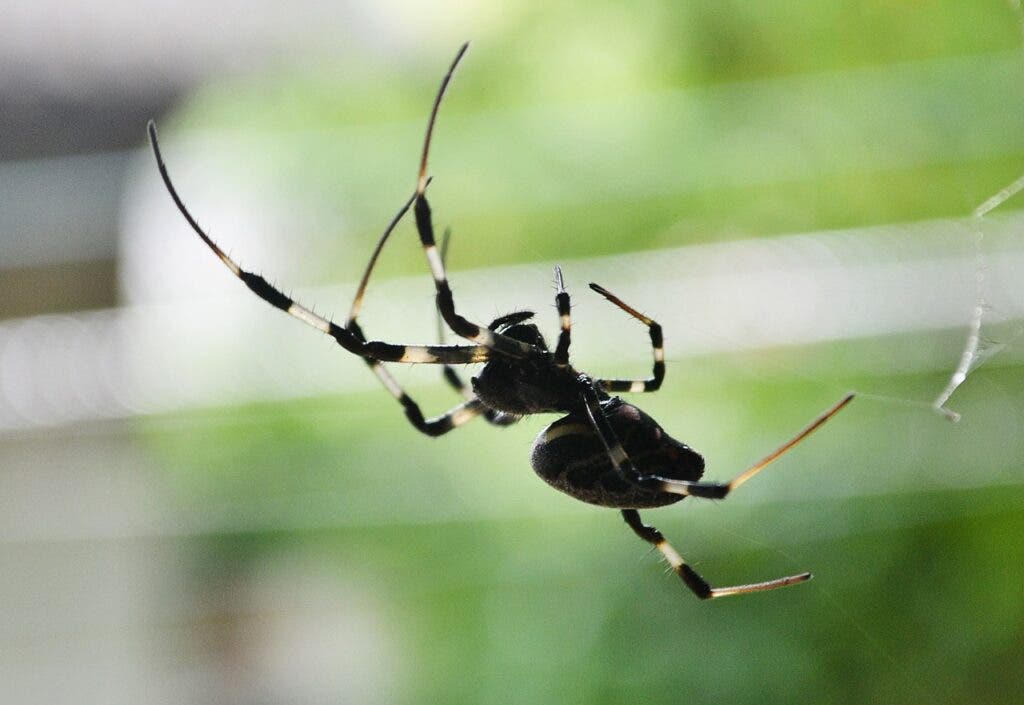
The tell-tale signs that autumn is here are clear to us; the days are getting shorter and the temperature is decreasing. We take this as a sign to pull out our winter woollies and think about turning on the radiators. But how do insects know that winter is coming? And what do they do to prepare?
Folklore has suggested over the years that insects and other invertebrates can predict the weather and that, for example, we could start to see bigger spider webs if the weather is going to get colder. The evidence for those bigger webs ahead of bad weather is weak. But there certainly are changes in insect behaviour we can see at this time of year, and it shows they are predicting changes they need to make as the weather changes.
Insects are extremely sensitive to changes in the environment and change in light is the main cue that insects use to signal the change in seasons. Insects, like humans, detect light with their eyes. But unlike humans insects have more than two eyes. In addition to the two big compound eyes that they have on the front of their heads most insects also have three smaller eyes on the top of their heads called ocelli. Light information is passed from their eyes to the brain and interpreted by an internal clock to detect the changing seasons, which may also be important in humans and other primates.
Responding to the changing seasons is really important for insects as they are cold blooded and can’t regulate their own body temperature. But insects have different ways of coping with the oncoming cold weather. Some, like the painted lady butterfly, leave the UK in autumn heading to north Africa where they breed. Others produce their own “antifreeze” proteins that allow them to cope with winter temperatures. However, the majority of insects undergo a slowing down process called diapause, where they essentially sleep for the winter. At this time of year these insects are looking for a sheltered place to spend the winter – and this is why we see more spiders in our houses at this time of year. You may also notice groups of insects, like ladybirds, huddled on windowsills and under rocks. These insects will stay protected over the winter and reawaken in spring.
Because of migration, diapause and the natural death of some insects at the end of the summer, you may generally feel there are fewer insects around than just a few weeks ago. But there are some new ones emerging that we didn’t see earlier in the summer. In the south you might spot the beautiful ivy bee which is only active when the ivy is in blossom. Autumn also brings the mass emergence of crane flies, which, although they look a bit like mosquitos, are actually harmless.
You also might notice more wasps visiting flowers to drink the sugary nectar – at this time of year they become very hungry for sugar. Wasps don’t really care where they get their sugar fix from and are just as likely to try and steal our sugary drinks as we are enjoying the last of the summer in our gardens or enjoying a walk. Their craving for sugar is actually really beneficial as their visits flower-to-flower, trying to satisfy their insatiable craving, lead them to pollinate flowers just like bees.
For me the most striking sign of autumn is the appearance of a lot of very large bumblebees out visiting the last flowers of the season.
These large bees are next year’s queens. After being born late in the summer season they mate and stock up on energy before finding a place to hibernate for the winter. When we see them again it’ll be an indicator that spring is on its way when the queens emerge from their sleep and make new nests.
This response to changing seasons and the fact that insects have been shown to change their behaviours, like mating, in response to impending rain leads to the assumption that insects are weather forecasters, predicting that rain is coming. However, it is more likely that they are just responding to the changes in weather, like people taking an umbrella with them when the skies are grey. But there is a lot of variation in how insects do respond to the weather and I, for one, will be sticking to the Met Office for my weather forecasts.![]()
Elizabeth Duncan, Associate Professor of Zoology, University of Leeds and Thomas Dally, Postdoctoral research fellow, University of Leeds
This article is republished from The Conversation under a Creative Commons license. Read the original article.


